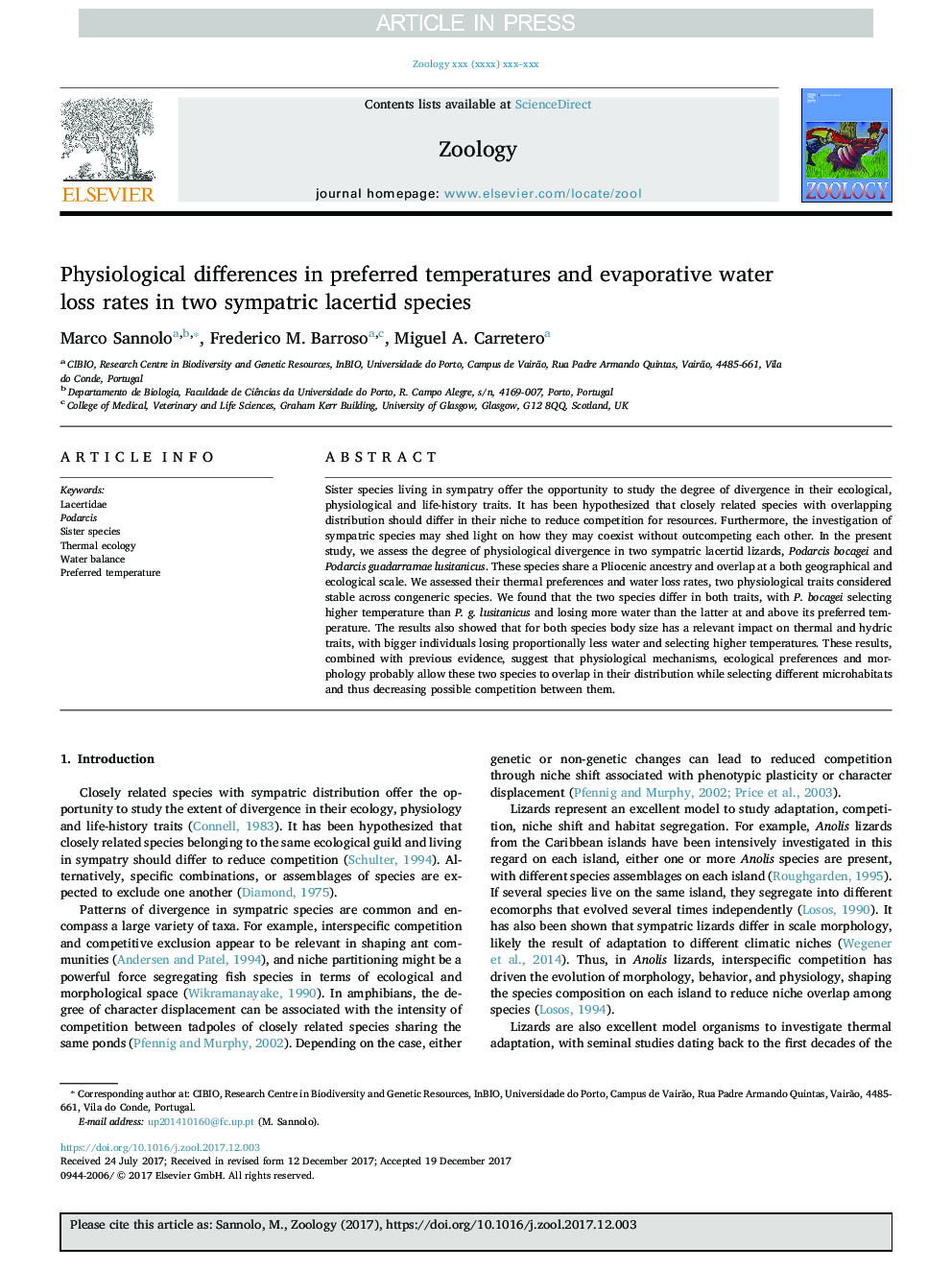| Article ID | Journal | Published Year | Pages | File Type |
|---|---|---|---|---|
| 8627067 | Zoology | 2018 | 7 Pages |
Abstract
Sister species living in sympatry offer the opportunity to study the degree of divergence in their ecological, physiological and life-history traits. It has been hypothesized that closely related species with overlapping distribution should differ in their niche to reduce competition for resources. Furthermore, the investigation of sympatric species may shed light on how they may coexist without outcompeting each other. In the present study, we assess the degree of physiological divergence in two sympatric lacertid lizards, Podarcis bocagei and Podarcis guadarramae lusitanicus. These species share a Pliocenic ancestry and overlap at a both geographical and ecological scale. We assessed their thermal preferences and water loss rates, two physiological traits considered stable across congeneric species. We found that the two species differ in both traits, with P. bocagei selecting higher temperature than P. g. lusitanicus and losing more water than the latter at and above its preferred temperature. The results also showed that for both species body size has a relevant impact on thermal and hydric traits, with bigger individuals losing proportionally less water and selecting higher temperatures. These results, combined with previous evidence, suggest that physiological mechanisms, ecological preferences and morphology probably allow these two species to overlap in their distribution while selecting different microhabitats and thus decreasing possible competition between them.
Related Topics
Life Sciences
Agricultural and Biological Sciences
Animal Science and Zoology
Authors
Marco Sannolo, Frederico M. Barroso, Miguel A. Carretero,
